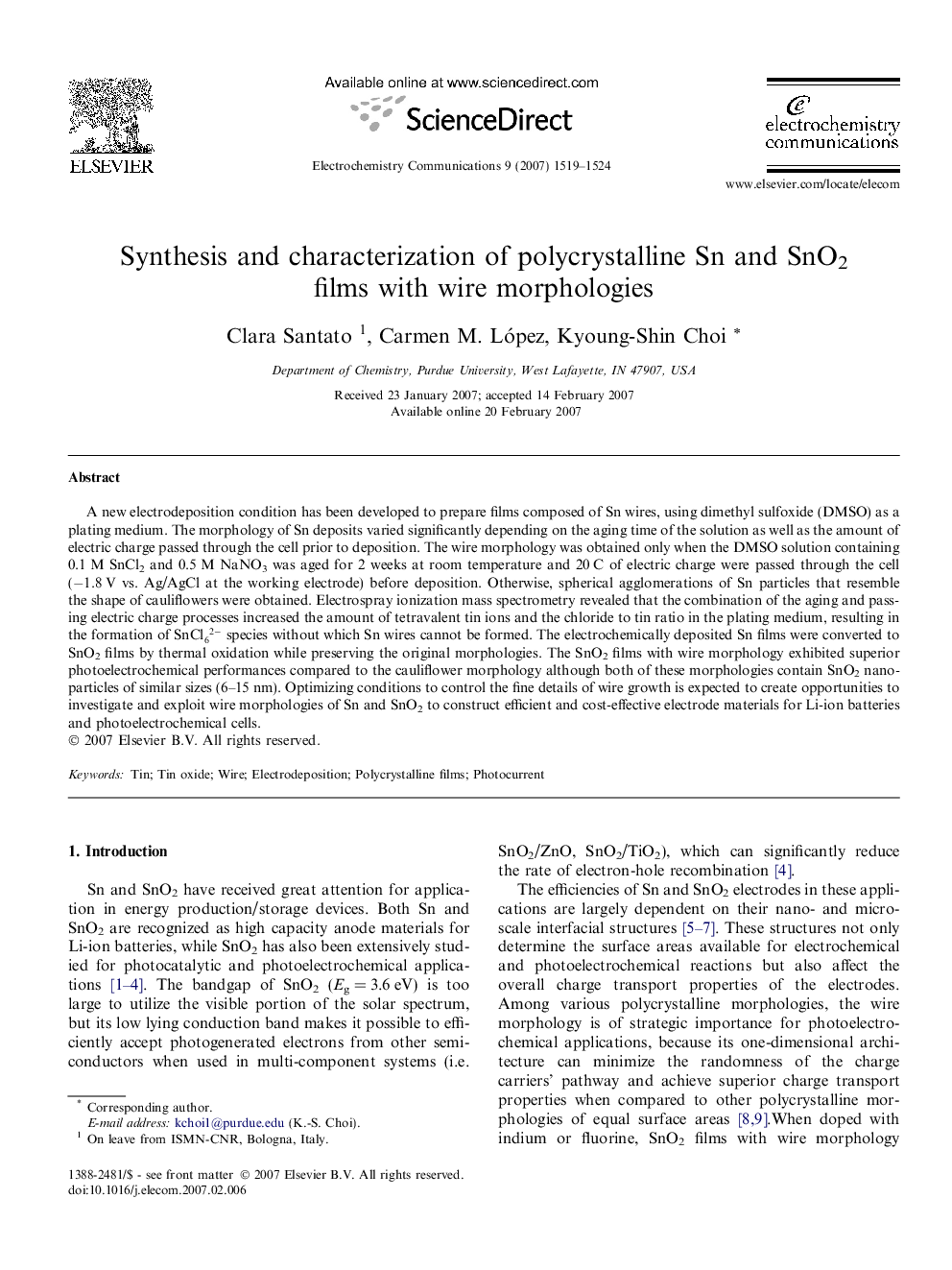| Article ID | Journal | Published Year | Pages | File Type |
|---|---|---|---|---|
| 182208 | Electrochemistry Communications | 2007 | 6 Pages |
A new electrodeposition condition has been developed to prepare films composed of Sn wires, using dimethyl sulfoxide (DMSO) as a plating medium. The morphology of Sn deposits varied significantly depending on the aging time of the solution as well as the amount of electric charge passed through the cell prior to deposition. The wire morphology was obtained only when the DMSO solution containing 0.1 M SnCl2 and 0.5 M NaNO3 was aged for 2 weeks at room temperature and 20 C of electric charge were passed through the cell (−1.8 V vs. Ag/AgCl at the working electrode) before deposition. Otherwise, spherical agglomerations of Sn particles that resemble the shape of cauliflowers were obtained. Electrospray ionization mass spectrometry revealed that the combination of the aging and passing electric charge processes increased the amount of tetravalent tin ions and the chloride to tin ratio in the plating medium, resulting in the formation of SnCl62- species without which Sn wires cannot be formed. The electrochemically deposited Sn films were converted to SnO2 films by thermal oxidation while preserving the original morphologies. The SnO2 films with wire morphology exhibited superior photoelectrochemical performances compared to the cauliflower morphology although both of these morphologies contain SnO2 nanoparticles of similar sizes (6–15 nm). Optimizing conditions to control the fine details of wire growth is expected to create opportunities to investigate and exploit wire morphologies of Sn and SnO2 to construct efficient and cost-effective electrode materials for Li-ion batteries and photoelectrochemical cells.
